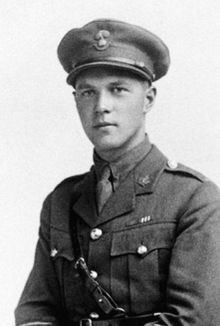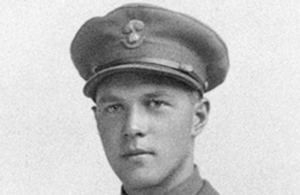Nickname(s) Lewis Unit 78th Battalion, CEF | Years of service 1915 - 1918 Role Soldier Name Samuel Honey | |
 | ||
Similar People Henry Horne - 1st Baron Ho, Georg von der Marwitz, Julian Byng - 1st Viscount, Otto von Below, James Edward Tait | ||
Place of burial Pas-de-Calais, France | ||
Lt. Honey VC, DCM, MM.
Samuel Lewis Honey, (9 February 1894 – 30 September 1918) was a soldier in the Canadian Expeditionary Force, and posthumous recipient of the Victoria Cross, the highest military award for gallantry in the face of the enemy given to British and Commonwealth forces, during the First World War.
Contents

Biography
Samuel Lewis Honey went by his middle name, Lewis. He was born on 9 February 1894 in Conn, Ontario to Reverend George Edward Honey and Metta Blaisdell. Honey was a schoolteacher in civilian life, and planned on attending Victoria College, University of Toronto, for an Arts degree. War interrupted these plans, and Lewis answered the call to arms.
Lewis originally joined the army as a non-commissioned soldier, enlisting 22 January 1915. He earned the Military Medal raiding German trenches on 22 February 1917, and covered his platoon and another in the face of heavy grenade fire. Lewis wrote that his party deserved recognition as much as he did. Lewis fought in the Battle of Vimy Ridge, earning the Distinguished Conduct Medal for leadership and maintaining morale in the face of extremely heavy fire. He was recommended for a commission after the battle, and Lewis earned his commission in 1918. Lewis remained modest about his role, stating in correspondence to family that he was simply lucky.
He was 24 years old, and a lieutenant in the 78th Battalion, Canadian Expeditionary Force, during the First World War. On 21 September 1918 at Bourlon Wood, France, he performed a deed at the battle of the Canal du Nord for which he was awarded the Victoria Cross.
Citation
For most conspicuous bravery during the Bourlon Wood operations, 27th September to 2nd October, 1918.
On 27th September, when his company commander and all other officers of his company had become casualties, Lt. Honey took command and skilfully reorganised under very severe fire. He continued the advance with great dash and gained the objective. Then finding that his company was suffering casualties from enfilade machine-gun fire he located the machine-gun nest and rushed it single-handed, capturing the guns and ten prisoners.
Subsequently he repelled four enemy counter-attacks and after dark again went out alone, and having located an enemy post, led a party which captured the post and three guns.
King George V authorized the Victoria Cross posthumously. Lewis was buried in Pas de Calais, France, at the Queant Communal Cemetery.
Plaque
A plaque was erected by the Highland Fusiliers of Canada with the support of the citizens of Cambridge and the Ontario Heritage Foundation in honour of Lieutenant Samuel Lewis Honey, VC, DCM, MM. Samuel Honey was born in Conn, Wellington County on February 9, 1894. A school teacher at 17, he enlisted on January 25, 1915, in the 34th battalion, C.E.F. being raised in Galt, and went to England as a sergeant in October 1915. In France, he won the military medal in January, 1917 and was awarded the Distinguished Conduct Medal for gallant leadership in April, 1917. After completing officer training, he returned to his unit in France and won the Victoria Cross at Bouillon Wood on September 27, 1918. With all other officers killed or wounded, he took command of his company and single-handed rushed and captured a machine-gun post and ten prisoners. He died of wounds on September 29, 1918, and is buried at Queant cemetery, France.
Medals
His Victoria Cross is displayed at the Canadian War Museum in Ottawa, Canada, alongside his Distinguished Conduct Medal, Military Medal, British War Medal (1914–1920), and Victory Medal. The Victoria Cross was not the 'Canadian' version (bearing the linguistically unbiased phrase "PRO VALORE"). As Lieutenant Honey was commissioned from the ranks, it was possible for him to earn medals reserved for non-commissioned ranks.
